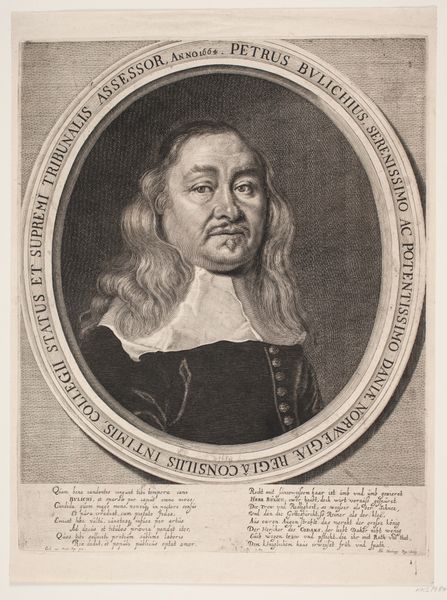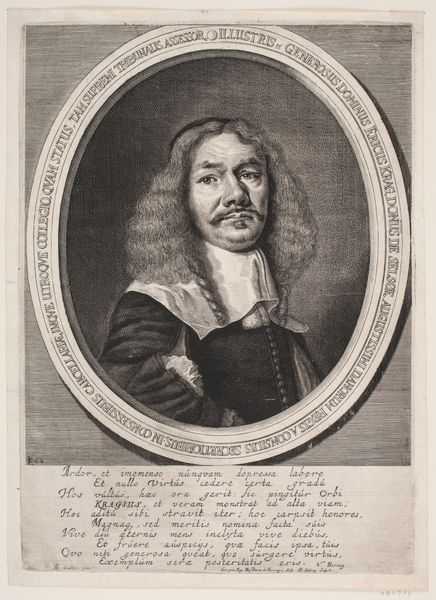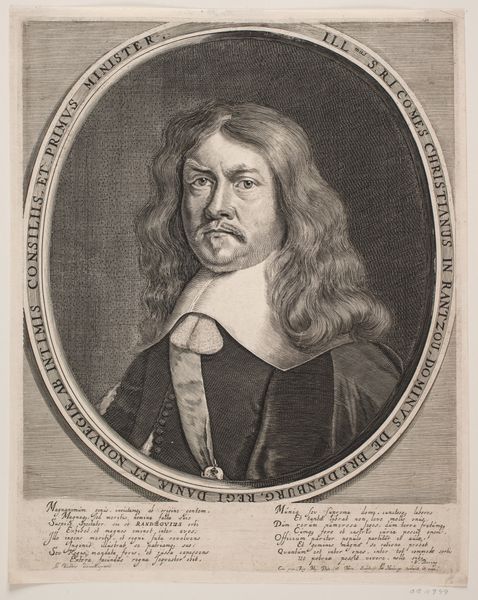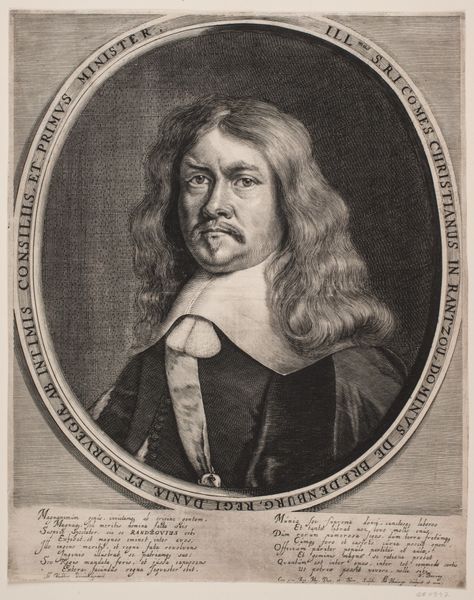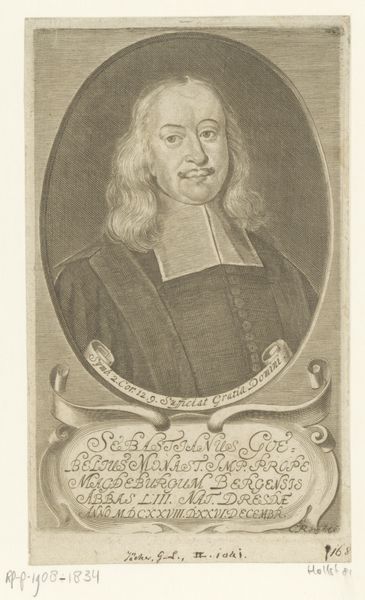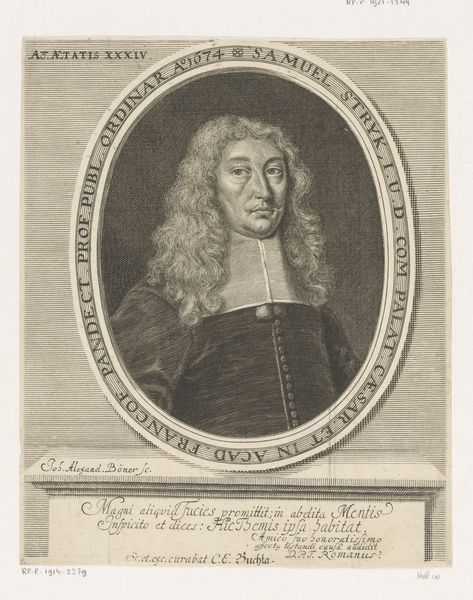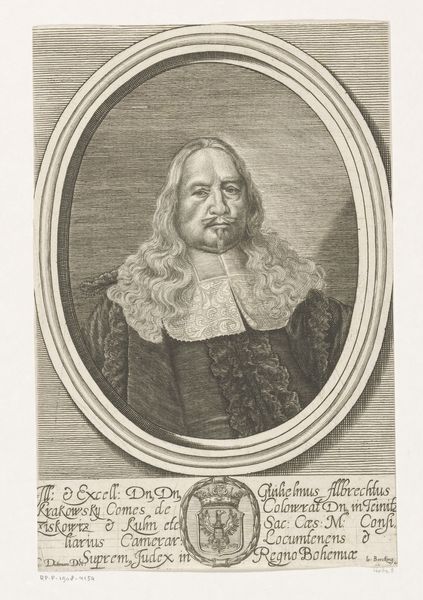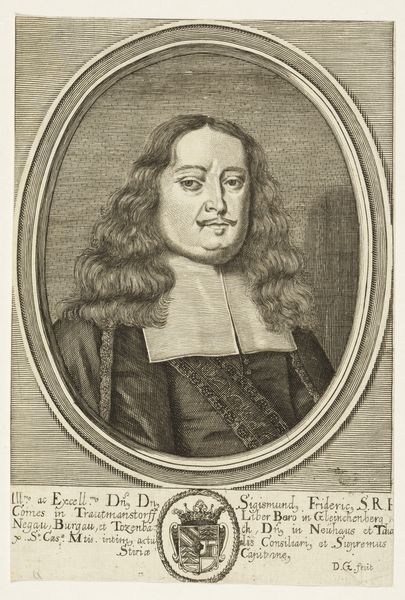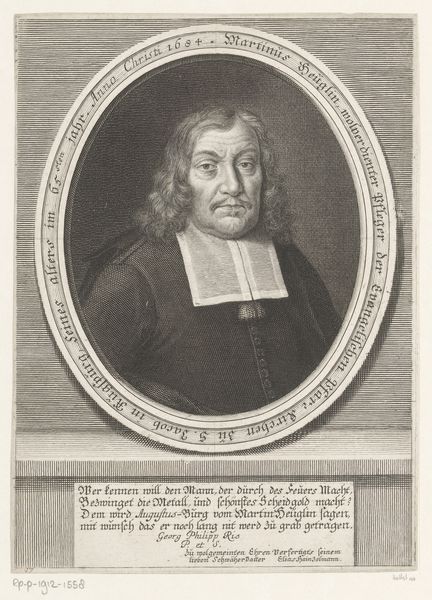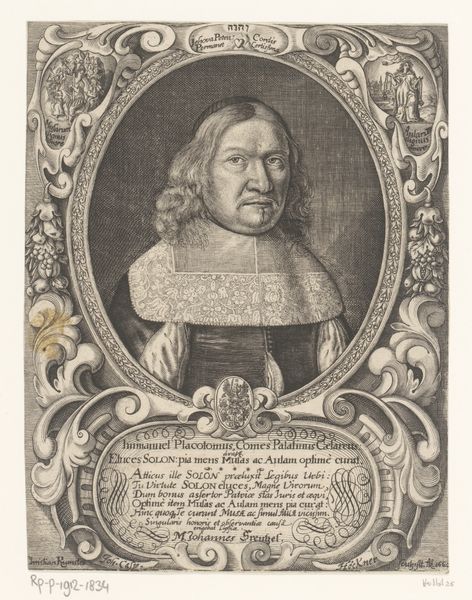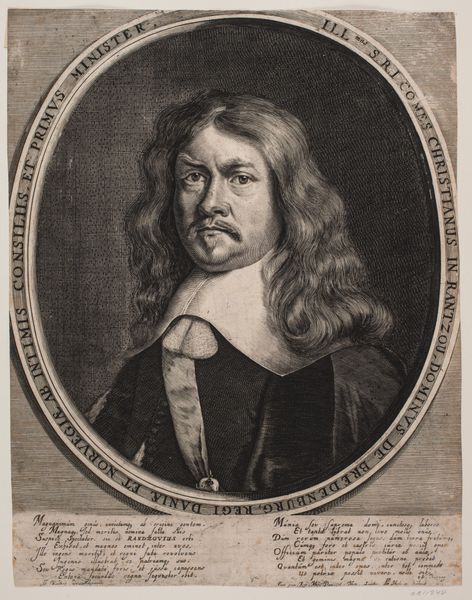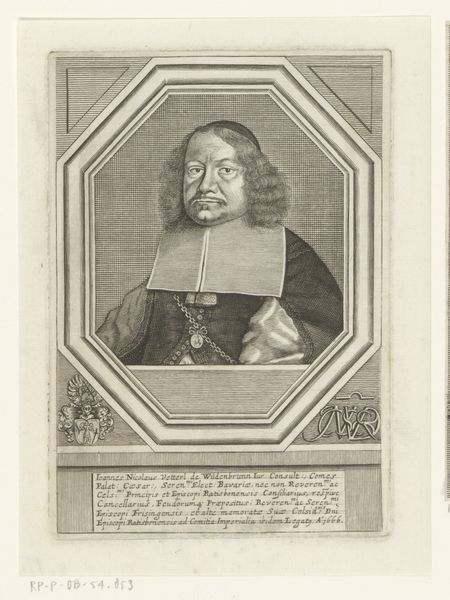
print, engraving
#
portrait
#
baroque
# print
#
northern-renaissance
#
engraving
Dimensions: 347 mm (height) x 277 mm (width) (plademaal)
Editor: Here we have Albert Haelwegh's "Peter B\u00fclcke," an engraving from sometime between 1664 and 1667. There's a formality to this piece, almost like a record of power and status. What social commentary do you see in this work? Curator: Absolutely. This engraving exists within a complex web of societal power structures. It’s not simply a portrait, but a carefully constructed representation of authority in 17th-century Denmark-Norway. Consider how B\u00fclcke is presented: the framing text emphasizes his role as assessor to the highest courts, intimately advising the King. What does this suggest about the relationship between power, representation, and social class at the time? Editor: It feels like this image actively participates in reinforcing the class system... by solidifying the sitter's importance. Curator: Precisely! How might such images have influenced contemporary viewers? This engraving was made at a time when printed images had increasing distribution. It’s about solidifying identity, class, and a whole system that dictates it. Consider how images like these shape our understanding of historical figures and their roles in perpetuating societal norms, don't you think? Editor: Yes, the symbols of power here – the wig, the clothing, even the text surrounding him – all work together to portray an image of undeniable authority and wealth. It is interesting to consider how art can reflect and also construct these types of ideas. Curator: And by understanding that interplay, we begin to unpack the complicated, sometimes uncomfortable, truths embedded within our visual history. That kind of context adds nuance to everything, doesn't it? Editor: It certainly does. I appreciate seeing how a portrait like this extends beyond simply capturing a likeness, becoming instead an artifact of power and social structure.
Comments
No comments
Be the first to comment and join the conversation on the ultimate creative platform.
